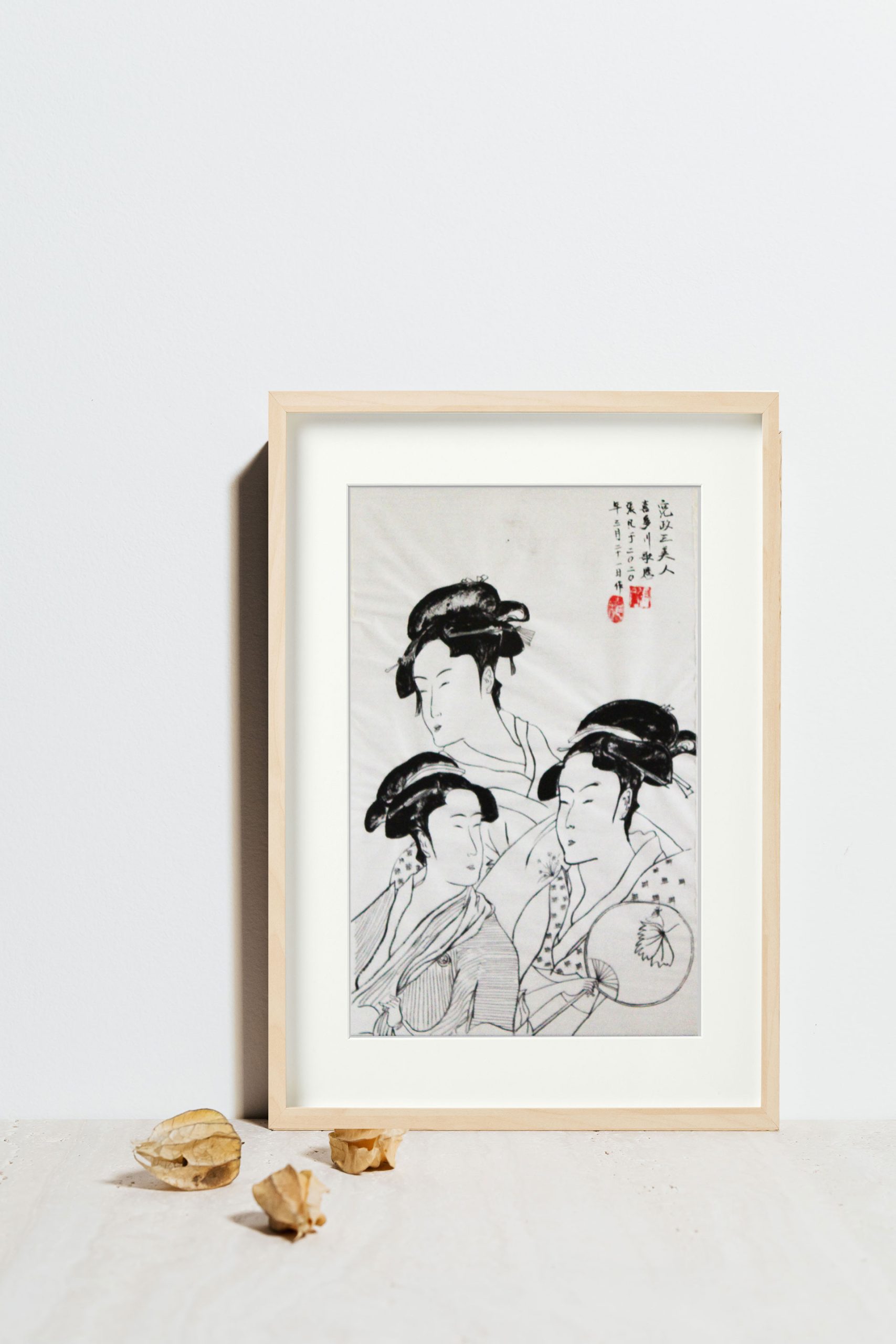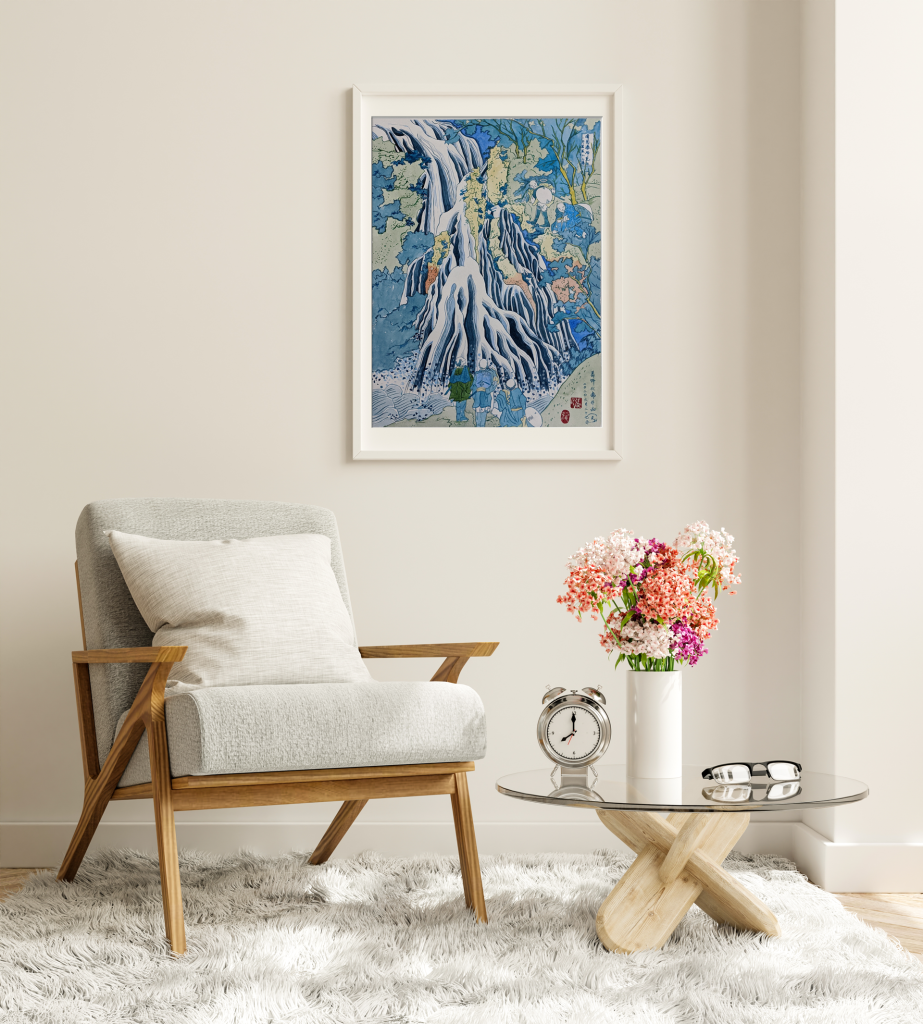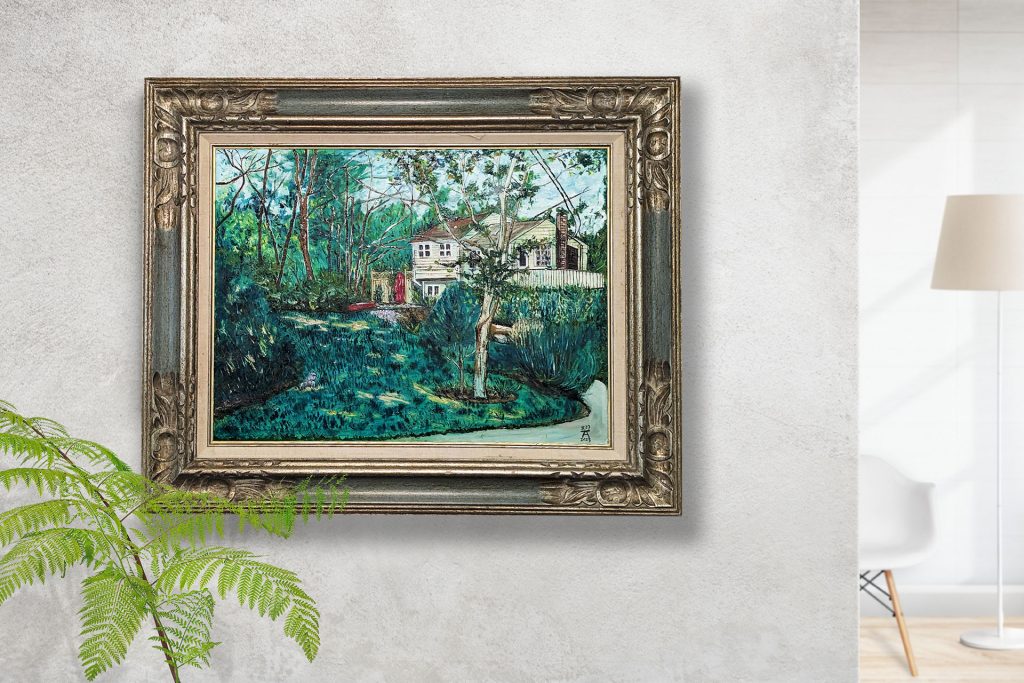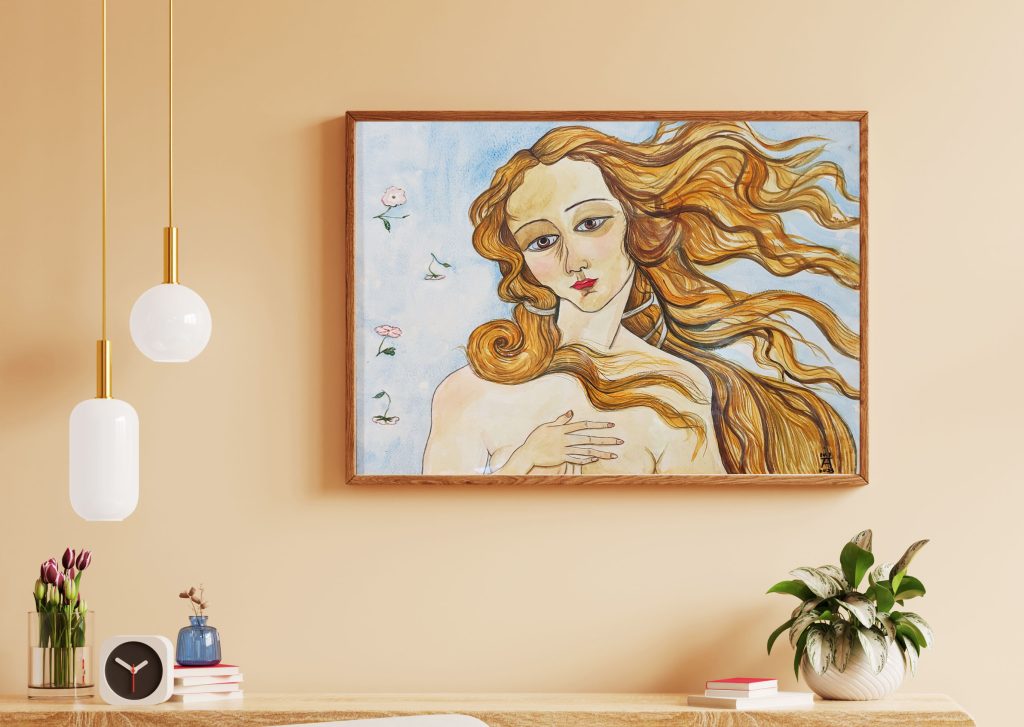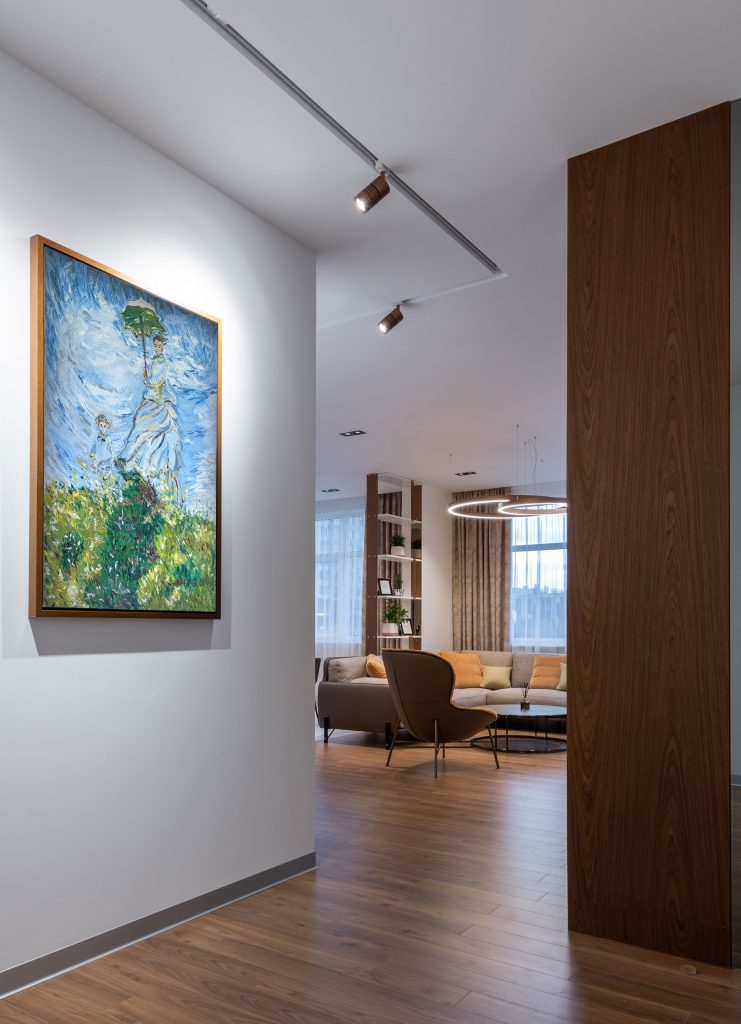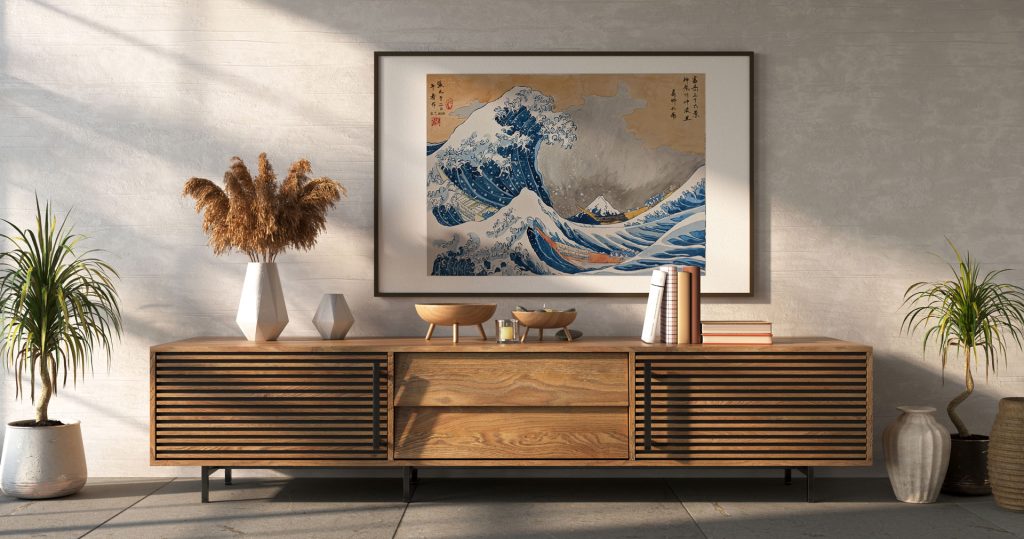Uekiyo-e style Three Beauties of the Present Day recreation in ink.
Three Beauties of the Present Day (当時三美人, Tōji San Bijin) is a nishiki-e colour woodblock print from c. 1792–93 by Japanese ukiyo-e artist Kitagawa Utamaro (c. 1753–1806). The triangular composition depicts the profiles of three celebrity beauties of the time: geisha Tomimoto Toyohina, and teahouse waitresses Naniwaya Kita and Takashima Hisa. The print is also known under the titles Three Beauties of the Kansei Era (寛政三美人, Kansei San Bijin) and Three Famous Beauties (高名三美人, Kōmei San Bijin).
Utamaro was the leading ukiyo-e artist in the 1790s in the bijin-ga genre of pictures of female beauties. He was known for his ōkubi-e, which focus on the heads. The three models in Three Beauties of the Present Day were frequent subjects of Utamaro’s portraiture. Each figure in the work is adorned with an identifying family crest. The portraits are idealized, and at first glance their faces seem similar, but subtle differences in their features and expressions can be detected—a level of realism at the time unusual in ukiyo-e, and a contrast with the stereotyped beauties in earlier masters such as Harunobu and Kiyonaga. The luxurious print was published by Tsutaya Jūzaburō and made with multiple woodblocks—one for each colour—and the background was dusted with muscovite to produce a glimmering effect. It is believed to have been quite popular, and the triangular positioning became a vogue in the 1790s. Utamaro produced several other pictures with the same arrangement of the same three beauties, and all three appeared in numerous other portraits by Utamaro and other artists.
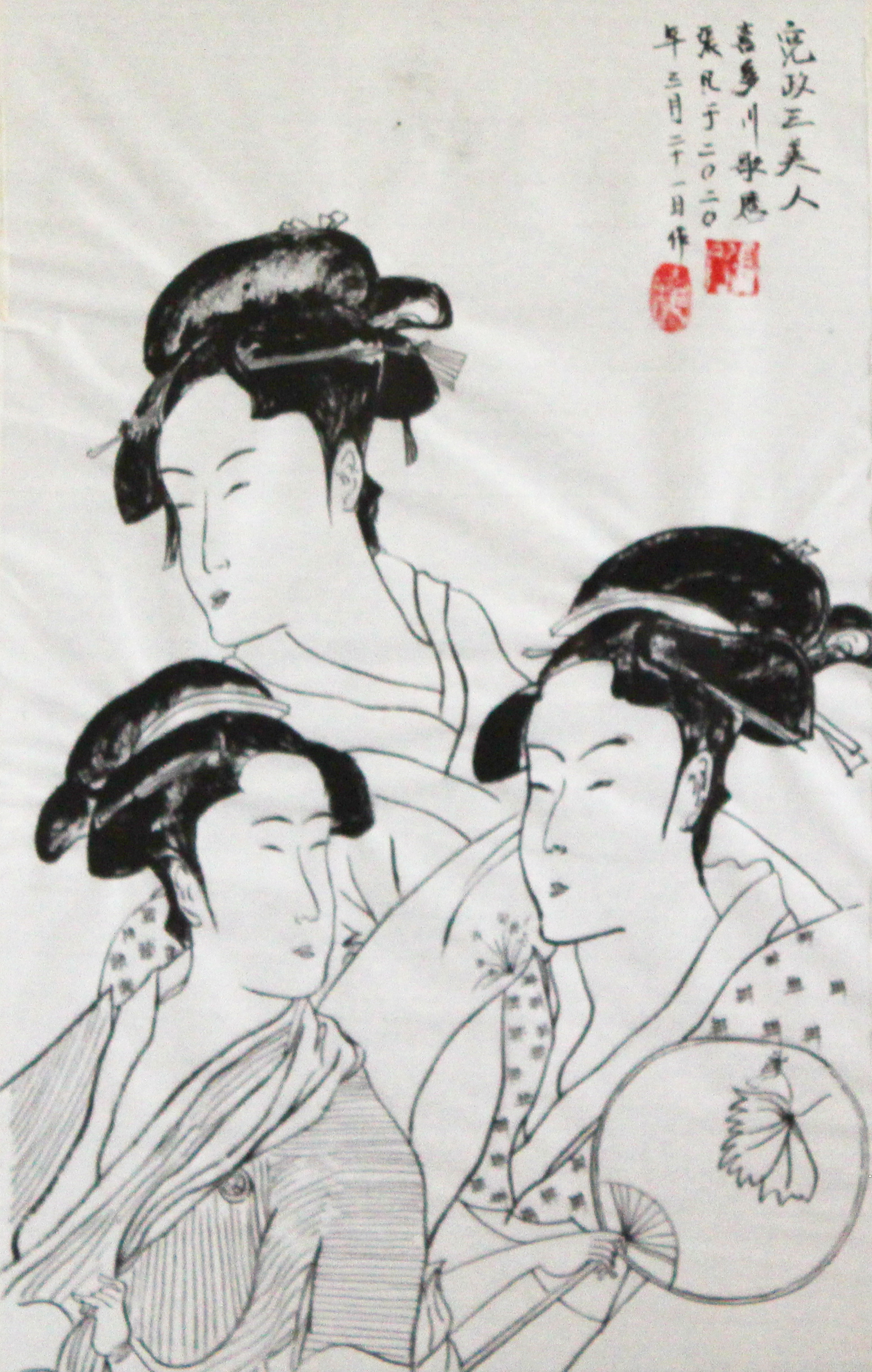
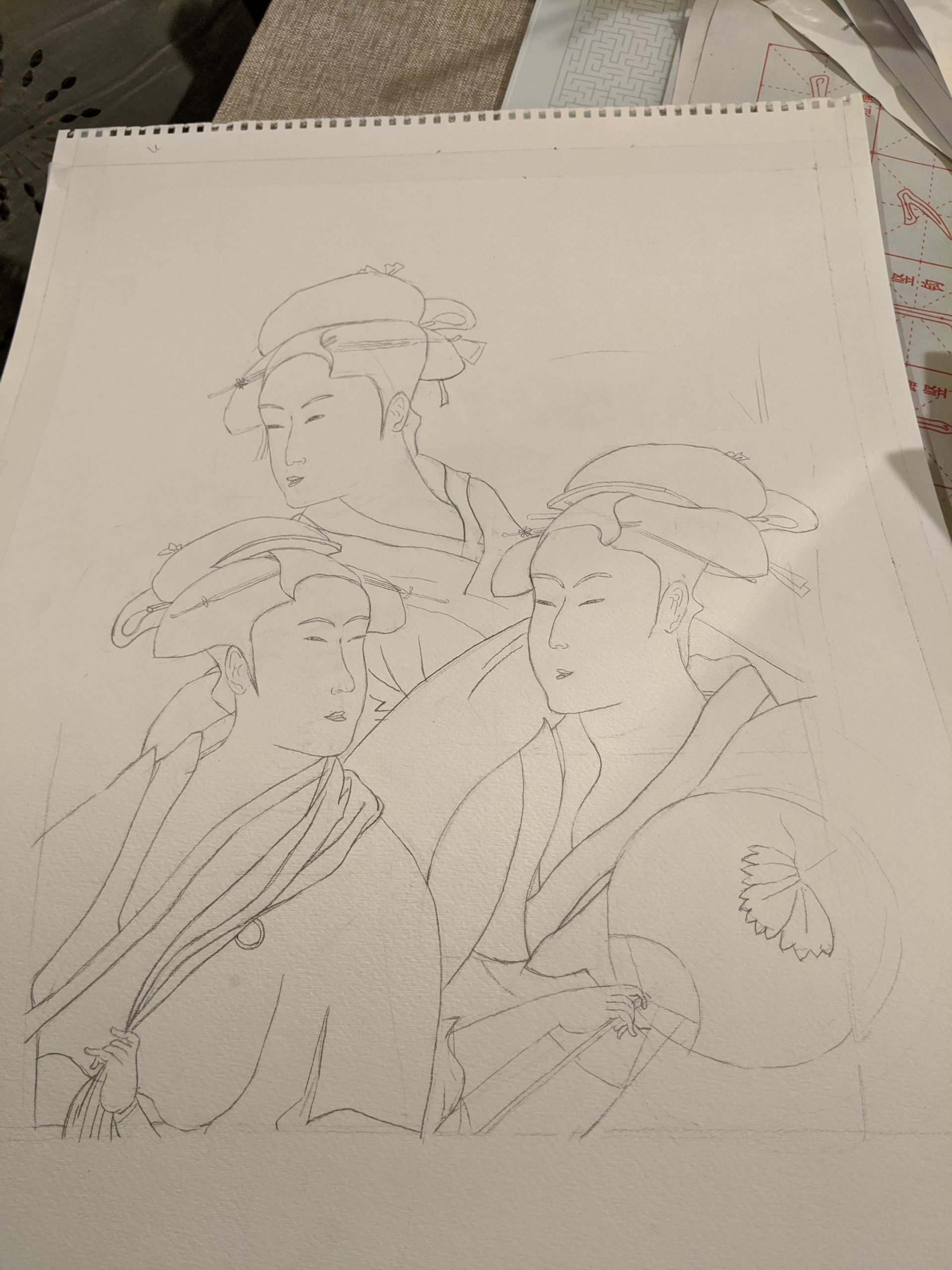
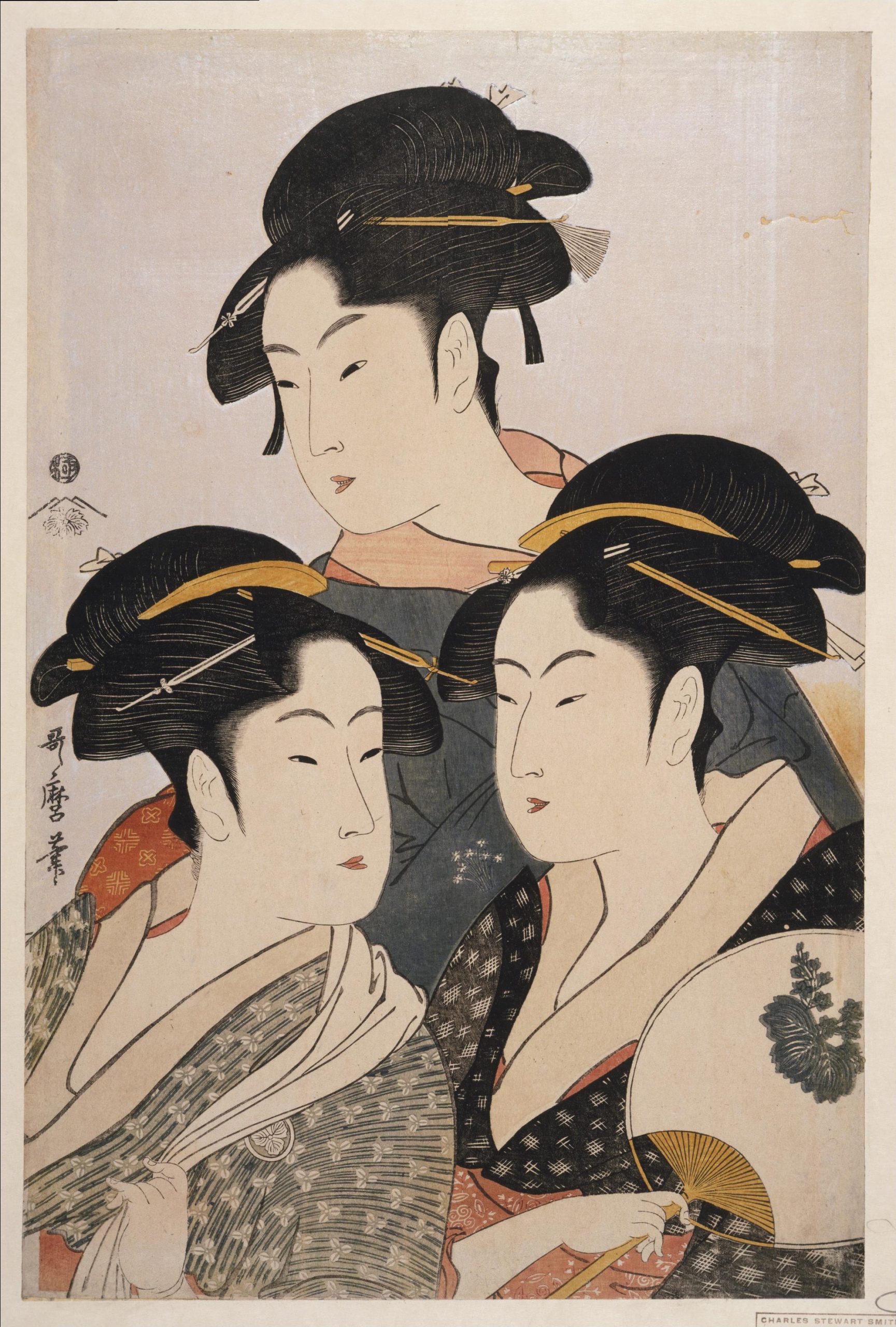
喜多川歌麿(1753年-1806年)与葛饰北斋、安腾广重被日本学者尊称为“浮世绘三大师”。,他是“大首绘”的创始人,也就是有脸部特写的半身胸像。他对处于社会底层的歌舞伎、大坂贫妓充满同情,并且以纤细高雅的笔触绘製了许多以头部为主的美人画,竭力探究女性内心深处的特有之美。代表作品有《江户宽政年间三美人》——中间是富本丰雏,右为阿北,左为阿久;丰雏是花街吉原艺妓,阿北与阿久是浅草观音堂随身门下茶室的姑娘。
喜多川歌麿 对处于社会底层的歌舞伎、大坂贫妓充满同情,因此,自1770年代开始在画坛崭露头角后,他的大部分画作都属于美人画。(他的美人画中,还有一部分属于春宫图……)
1790年,德川幕府颁布书籍出版取缔令布告,下令取消有伤社会风化的出版物,对浮世绘版画实施各种禁令,特别是颜色限制(锦绘中仅以单调的墨、紫、深灰为主),擅长春宫画的歌麿颇受打击。 1804年歌麿 绘制了《太阁洛东五妻游观》,取材于前朝的“太阁”丰臣秀吉跟他的五个妻妾游乐之景,却被认为在影射讽刺当时的幕府将军德川家齐(同样妻妾成群),遭受手铐刑的处罚,两年后去世。
他以纤细高雅的笔触绘制了许多以头部为主的美人画,力图展现女性内心深处的特有之美。其画风不仅在日本影响极大,还声播海外。19世纪中期, 喜多川歌麿的一些画作被引入欧洲,在法国尤其受到推崇。法国的印象派画家广泛学习借鉴 喜多川歌麿的手法,艺术史中提到法国印象派之“日本影响”,通常指的正是喜多川歌麿。

